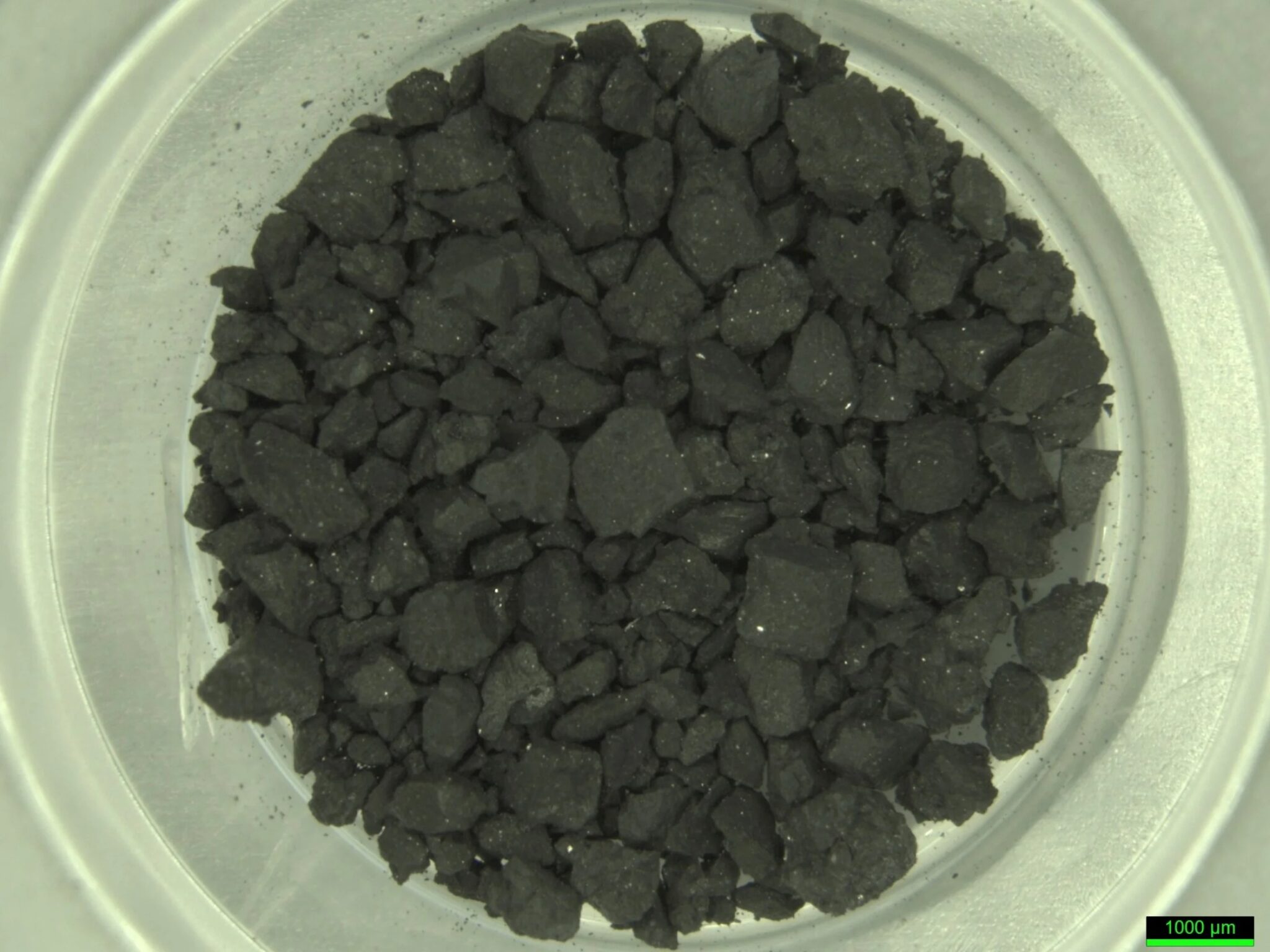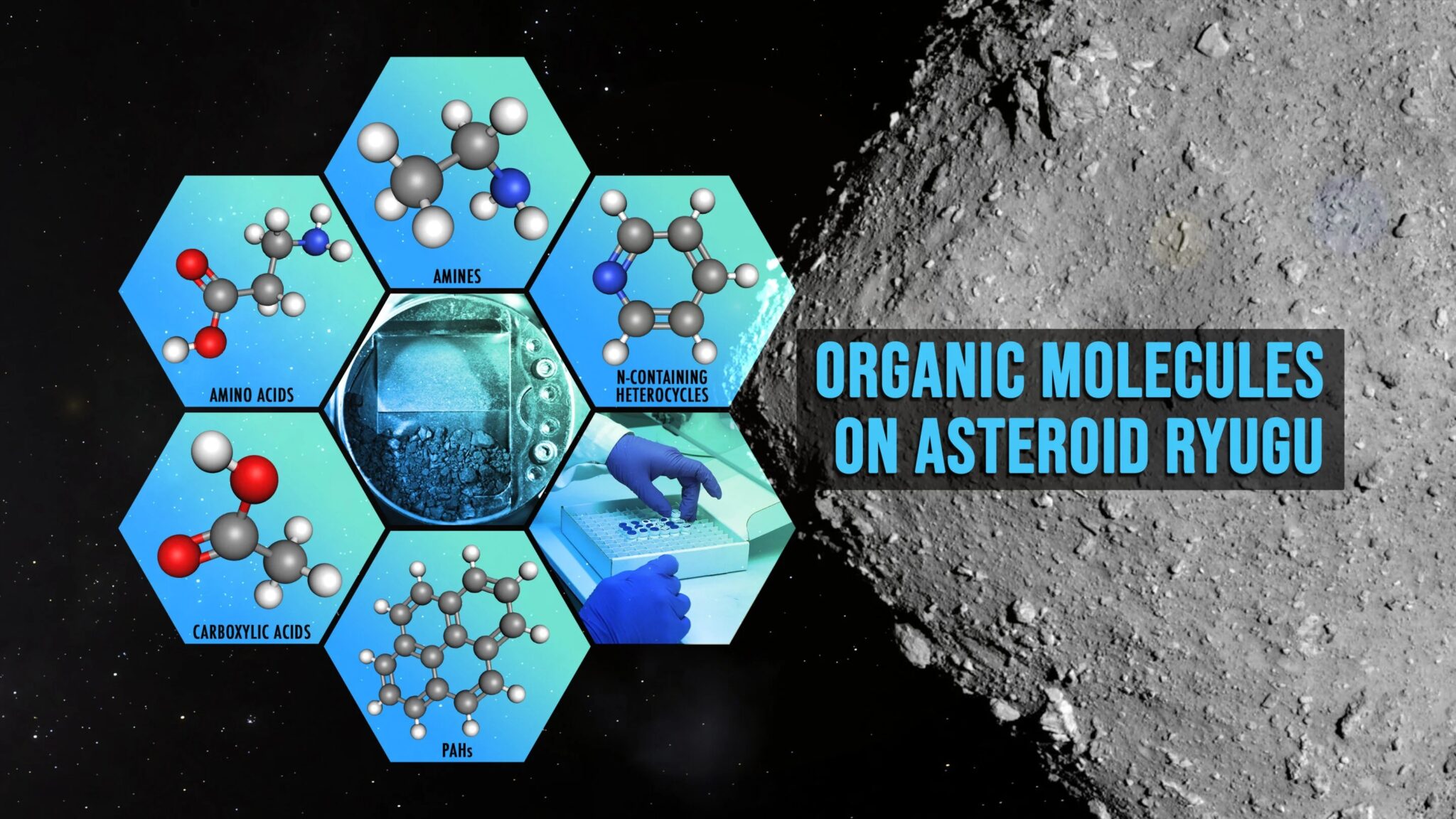Organic molecules were found in samples taken from the Ryugu asteroid by the Hayabusa-2 mission. The discovery allowed scientists to assume that the ingredients for the life of those who came to Earth were precisely due to the impacts of meteorites and asteroids in the past.
The team of researchers identified hundreds of thousands of ionic signals from Ryugu samples, which they attribute to numerous organic molecules, including 15 amino acids, aromatic hydrocarbons and other compounds. Their research is published in Science.

Ryugu is a simple carbon asteroid, a rocky remnant from the formation of the Solar System more than 4 billion years ago. The Japanese Hayabusa-2 mission visited Ryugu and collected samples from its surface in 2019. The signs from the asteroid gave us a great way to find out what the Solar System was like in the early stages of its formation.
“The presence of organic molecules on the surface of the asteroid, despite the unfriendly environment caused by solar heating and ultraviolet irradiation, indicates that the upper grains of the Ryugu surface have the potential to protect them. These molecules can be transported throughout the Solar System, potentially scattering as interplanetary dust particles after being ejected from the asteroid’s upper layer due to impacts or other causes,” said Hiroshi Naraoka, a planetary scientist at Kyushu University in Japan.
Life came from outer space
An urgent question in biochemistry is how the building blocks for life, such as amino acids, arrived on Earth. Organic molecules, such as amino acids and nucleotides, were found earlier in meteorites that fell to Earth, but they were polluted by the Earth’s environment. That is why the find on Ryugu turned out to be so special. “Hayabusa-2” of the Japanese Space Agency (JAXA) collected clumps of dust, rocks and gas from the asteroid Ryugu in 2019, when it was almost 320 million kilometers from Earth. Scientists received precious cargo in 2020, when the device dropped about 5.4 g of samples from an asteroid to Earth.

The research team noted that the Ryugu samples were exposed to the influence of space and related conditions, from micrometeoroid impacts to heating from the Sun. That is why they are the cleanest in the Solar System. “The presence of probiotic molecules on the asteroid’s surface suggests that these molecules can be transported throughout the Solar System,” the team wrote.
NASA’s OSIRIS-REx mission is now returning from the asteroid Bennu, where it has conducted a similar sampling operation.
“We will make a direct comparison of samples from Ryugu and samples from the asteroid Bennu when NASA’s OSIRIS-REx mission returns it to Earth in 2023,” said study co–author Jason Dworkin, an astrochemist at NASA’s Goddard Space Flight Center.
Earlier, scientists discovered that the Ryugu asteroid formed in the outer part of the Solar System.
Follow us on Twitter to get the most interesting space news in time
https://twitter.com/ust_magazine

